Improved Yield Line Analysis and Innovative Methodology to Evaluate the Capacity of RC Barriers Subjected to Vehicular Collision Force
Abstract
1. Introduction
2. AASHTO’s Procedure of YLA
- The deck has sufficient resistance to the applied transverse forces thus the yield line failure pattern will remain within the parapet.
- The presence of sufficient longitudinal length of the parapet to produce the assumed V-shape yield line failure pattern.
- The flexural capacity of the RC barrier is only from the concrete contribution; the contribution of the stirrups and/or ties is to prevent shear and diagonal tension.
- The wall resistance is the average of its value along the height when the width of the barrier varies along the height.
- The negative and positive wall resisting moments are equal
3. Improved YLA of RC Barriers
3.1. Sectional Capacity
3.2. Formation of Yield Lines
- Deformations and strains through the thickness are neglected in accordance with typical plate and shell assumptions. Therefore, the rotation of the vertical surface (back face of barrier) directly corelates to the rotation of an inclined surface (front face of barrier).
- For barriers that have sloped sides, the value of the deformation angle measured with respect to an assumed vertical plane and the deformation angle of the actual sloped side is almost the same. Therefore, the angle used in the derivations are referenced with respect to the vertical plane.
- The capacity of barrier is controlled by its flexural resistance. Shear failures are assumed to be avoided through sufficient distribution of transverse reinforcement.
3.3. Internal Work Along the Yield Lines
3.4. External Work by Applied Loads
4. Truss Analogy
4.1. Modeling Concept
4.2. Equivalent Failure Mechanism
5. Case Study
5.1. AASHTO’S Procedure of YLA
5.2. Improved YLA
5.3. Truss Analogy
5.4. Finite Element Analysis by Abaqus
5.5. Results Discussion
6. Conclusions and Recommendations
- The current AASHTO’s YLA underestimated the barrier’s transverse capacity by about 11% and 40% compared to the detailed YLA and the FEA respectively.
- The proposed detailed YLA is powerful in obtaining the barrier’s capacity under different transverse loading patterns. A very good agreement between the capacity obtained by this method and the FEA is observed.
- The new truss analogy proposed to obtain the barrier’s transverse capacity is capable of capturing the ultimate resistance of the barrier when subjected to a transverse concentrated load. This model showed very good agreement compared to the analytical solution for the same loading pattern with some underestimation of the capacity compared to the other methods presented. Therefore, this model can be considered as a lower bound solution.
- Based on the results shown in this study, the authors recommend making a distinction in the structural adequacy criterion between the barrier’s load resistance and its geometrical adequacy to redirect colliding vehicles. The authors are currently investigating a methodology to upgrade the geometrical properties of RC barriers with innovative materials such as FRP. They conducted several studies to investigate the behavior of FRP strengthening of RC beams under dynamic load effects [19,20,21]. The current investigation considers RC barriers.
- Also, the authors recommend further development and refinement to the truss analogy model to better represent the barrier and maybe obtain the capacity under different loading patterns than the concentrated load.
Author Contributions
Funding
Data Availability Statement
Acknowledgments
Conflicts of Interest
Appendix A
| Back Side | ||
|---|---|---|
| Step | Section 1 (Z1 = 0–560) | Section 2 (Z2 = 560–813) |
| 1 | ||
| 2 | ||
| 3 | ||
| 4 | ||
| 5 | ||
| Front Side | ||
|---|---|---|
| Step | Section 1 (Z1 = 0–560) | Section 2 (Z2 = 560–813) |
| 1 | ||
| 2 | ||
| 3 | ||
| 4 | ||
| 5 | ||
| Step | Front Side | ||
|---|---|---|---|
| 1 | Section 1 (Z1 = 0 mm) | Section 2 (Z2 = 560 mm) | Section 3 (Z3 = 813 mm) |
| 2 | |||
| 3 | |||
| 4 | |||
| 5 | |||
References
- Ross, H.E. (Ed.) Recommended procedures for the safety performance evaluation of highway features. In National Cooperative Highway Research Program Report; no. 350; Transportation Research Board, National Research Council; National Academy Press: Washington, DC, USA, 1993; ISBN 978-0-309-04873-6. [Google Scholar]
- American Association of State Highway and Transportation Officials. Manual for Assessing Safety Hardware, 2nd ed.; American Association of State Highway and Transportation Officials: Washington, DC, USA, 2016; ISBN 978-1-56051-665-1. [Google Scholar]
- American Association of State Highway and Transportation Officials. LRFD Bridge Design Specifications; American Association of State Highway and Transportation Officials: Washington, DC, USA, 2020; ISBN 978-1-56051-738-2. [Google Scholar]
- Hirsch, T.J. Analytical Evaluation of Texas Bridge Rails to Contain Buses and Trucks. Art. no. FHWATX78-230–2. August 1978. Available online: https://trid.trb.org/view/138035 (accessed on 30 January 2023).
- Jeon, S.-J.; Choi, M.-S.; Kim, Y.-J. Ultimate Strength of Concrete Barrier by the Yield Line Theory. Int. J. Concr. Struct. Mater. 2008, 2, 57–62. [Google Scholar] [CrossRef]
- Cao, R.; Agrawal, A.K.; El-Tawil, S.; Wong, W. Numerical Studies on Concrete Barriers Subject to MASH Truck Impact. J. Bridge Eng. 2020, 25, 04020035. [Google Scholar] [CrossRef]
- Loken, A.E.; Steelman, J.S.; Rosenbaugh, S.K.; Faller, R.K.; Holt, J.M. Comparison of Modified Yield-Line and Punching Shear Capacities for Concrete Traffic Barriers and Bridge Rails. Transp. Res. Rec. 2021, 2675, 689–701. [Google Scholar] [CrossRef]
- Alberson, D.C.; Williams, W.F.; Menges, W.L. Testing and Evaluation of the Florida F Shape Bridge Rail with Reduced Deck Thickness; FHWA/TX-05/9-8132-3; Texas Dept. of Transportation: College Station, TX, USA, 2005. [Google Scholar]
- Williams, W.F.; Buth, C.E.; Menges, W.L. Repair/Retrofit Anchorage Designs for Bridge Rails; Texas A&M Transportation Institute: College Station, TX, USA, 2007. [Google Scholar]
- Sennah, K.; Tropynina, E.; Ibrahim, Z.; Hedjazi, S. Structural qualification of a developed GFRP-reinforced concrete bridge barrier using ultimate load testing. Int. J. Concr. Struct. Mater. 2018, 12, 63. [Google Scholar]
- Rosenbaugh, S.; Sicking, D.; Faller, R. Development of a TL-5 Vertical Faced Concrete Median Barrier Incorporating Head Ejection Criteria. Neb. Dep. Transp. Res. Rep. 2007. Available online: https://digitalcommons.unl.edu/ndor/38 (accessed on 30 March 2025).
- Bullard, D.; Roger, P.B.; Menges, W.L.; Haug, R.R. Evaluation of Existing Roadside Safety Hardware Using Updated Criteria Technical Report (2010); Transportation Research Board: Washington, DC, USA, 2010; Volume 1, p. 22938. ISBN 978-0-309-43011-1. [Google Scholar]
- Salahat, F.H.; Jones, C.A.; Rasheed, H.A. Estimation of Vehicular Collision Force on Bridge Piers in the Presence of Sub-Standard Intervening Concrete Barriers. Transp. Res. Rec. 2023, 2677, 326–339. [Google Scholar] [CrossRef]
- Salahat, F.H. Performance of Sub-Standard Reinforced Concrete Barriers in Protecting Bridge Piers Against Vehicular Collision Force. 2023. Available online: https://krex.k-state.edu/items/bd143abd-bd70-4c89-97f7-17578cce6728 (accessed on 30 March 2025).
- Salahat, F.H.; Jones, C.A.; Rasheed, H.A. Assessment of Substandard Concrete Barriers as Protective Structures to Bridge Piers against Vehicular Collision Force. J. Bridge Eng. 2024, 29, 04024043. [Google Scholar] [CrossRef]
- Kim, J.J.; Ahn, J.S. Vehicle Collision Analysis of the Reinforced Concrete Barriers Installed on Bridges Using Node-Independent Model. Appl. Sci. 2024, 14, 10518. [Google Scholar] [CrossRef]
- Building Code Requirements for Structural Concrete (ACI 318-25) and Commentary on Building Code Requirements for Structural Concrete (ACI 318R-25); American Concrete Institute: Farmington Hills, MI, USA, 2025.
- Jankowiak, T.; Lodygowski, T. Identification of parameters of concrete damage plasticity constitutive model. Found. Civ. Environ. Eng. 2005, 6, 53–69. [Google Scholar]
- Alshamrani, S.; Salahat, F.; Rasheed, H.; Shapack, G.; Albahttiti, M. Cyclic Performance of Carbon Fiber-Re info reed Polymer-Strengthened Reinforced Concrete Beams in Flexure. ACI Struct. J. 2025, 122, 161–174. [Google Scholar]
- Alshamrani, S.; Saleem, S.M.; Rasheed, H.A.; Salahat, F.H. Salahat Modeling Cyclic Response of CFRP Strengthened Fiber Anchored RC Frame Members to Failure. ACI Symp. Publ. 2024, 360. Available online: https://www.concrete.org/publications/internationalconcreteabstractsportal/m/details/id/51740641 (accessed on 30 March 2025).
- Alshamrani, S.; Rasheed, H.A.; Salahat, F.H.; Borwankar, A.; Divilbiss, N. Seismic flexural behavior of CFRP strengthened reinforced concrete beams secured with fiber anchors. Eng. Struct. 2024, 305, 117728. [Google Scholar] [CrossRef]

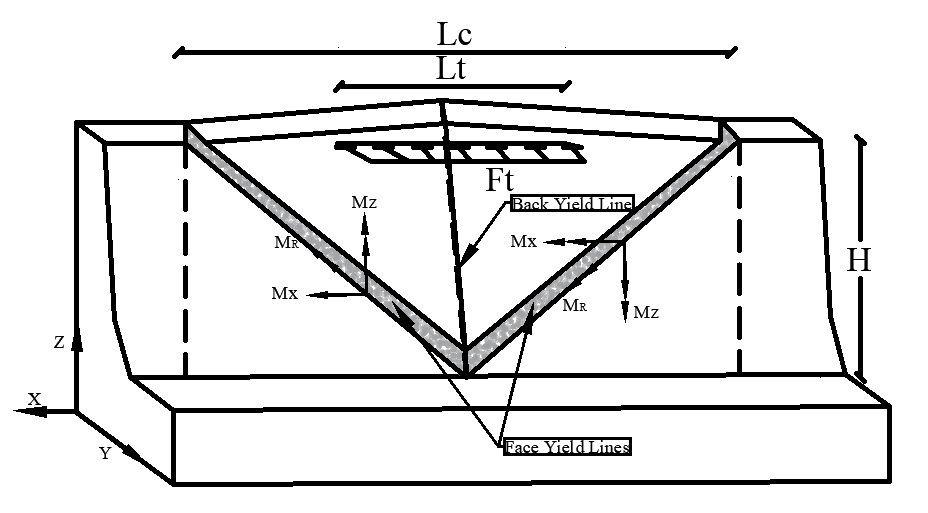
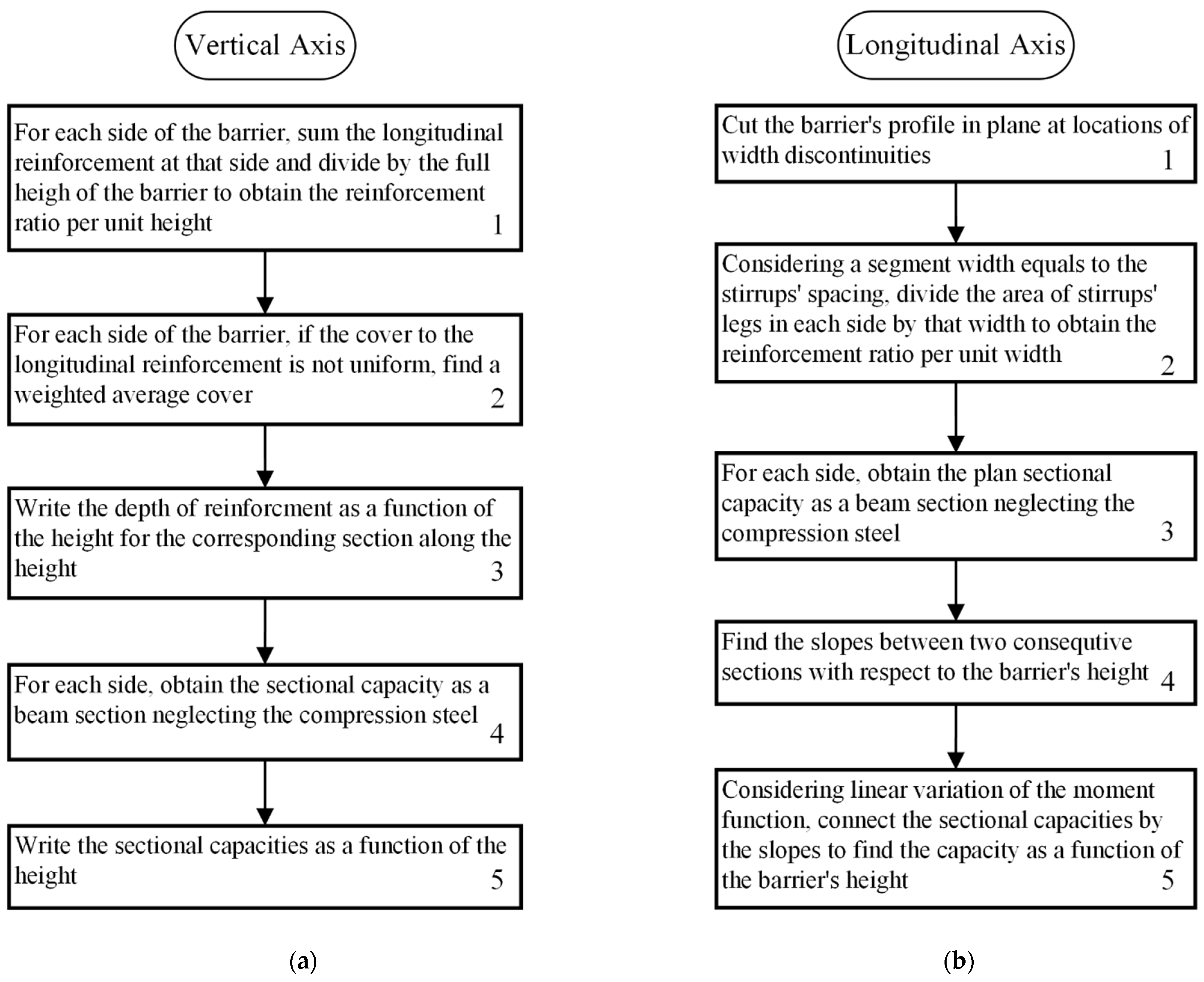

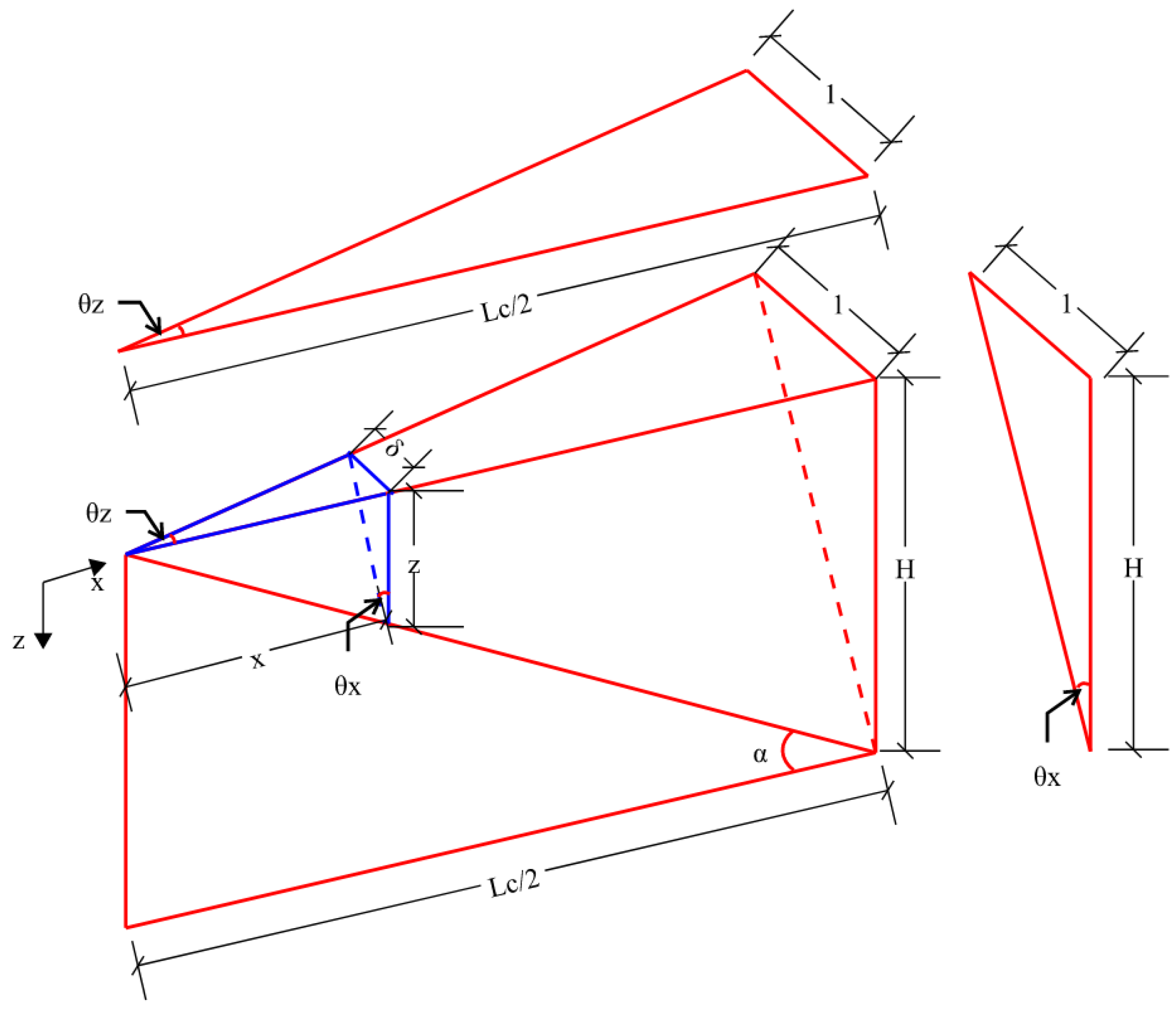


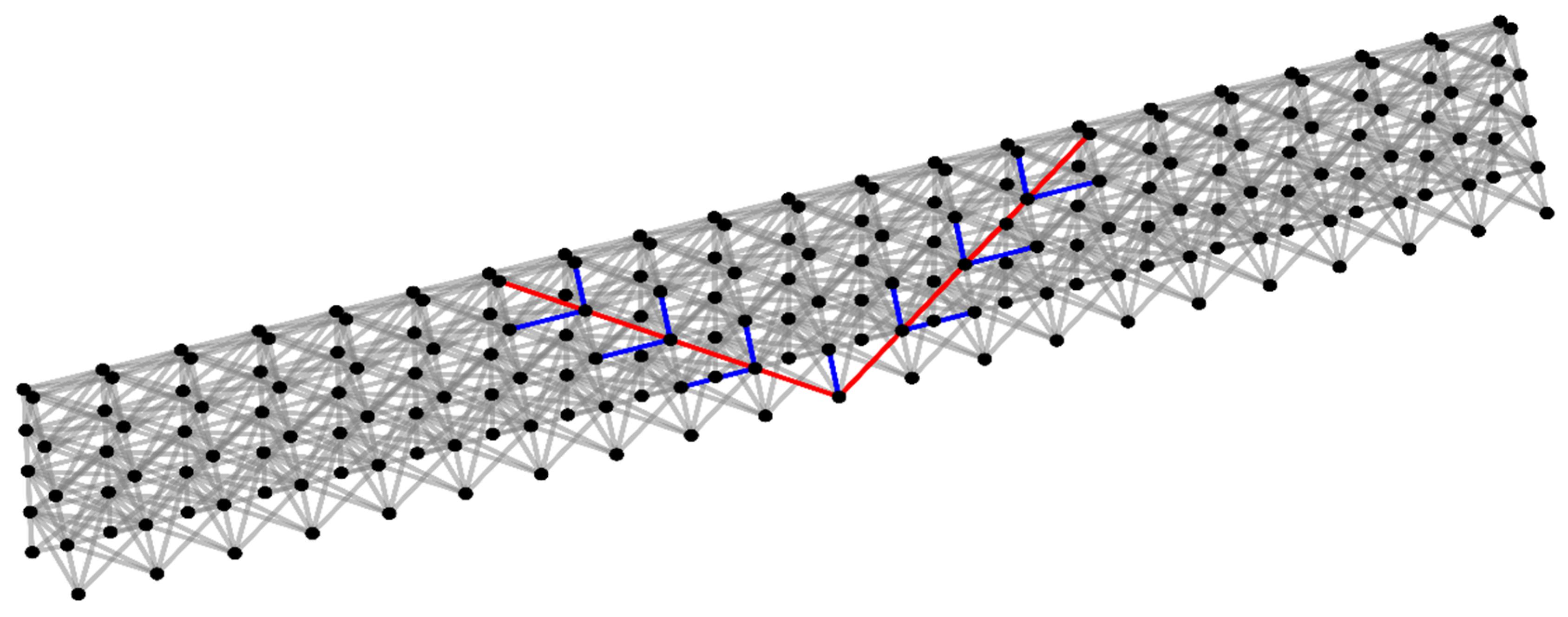
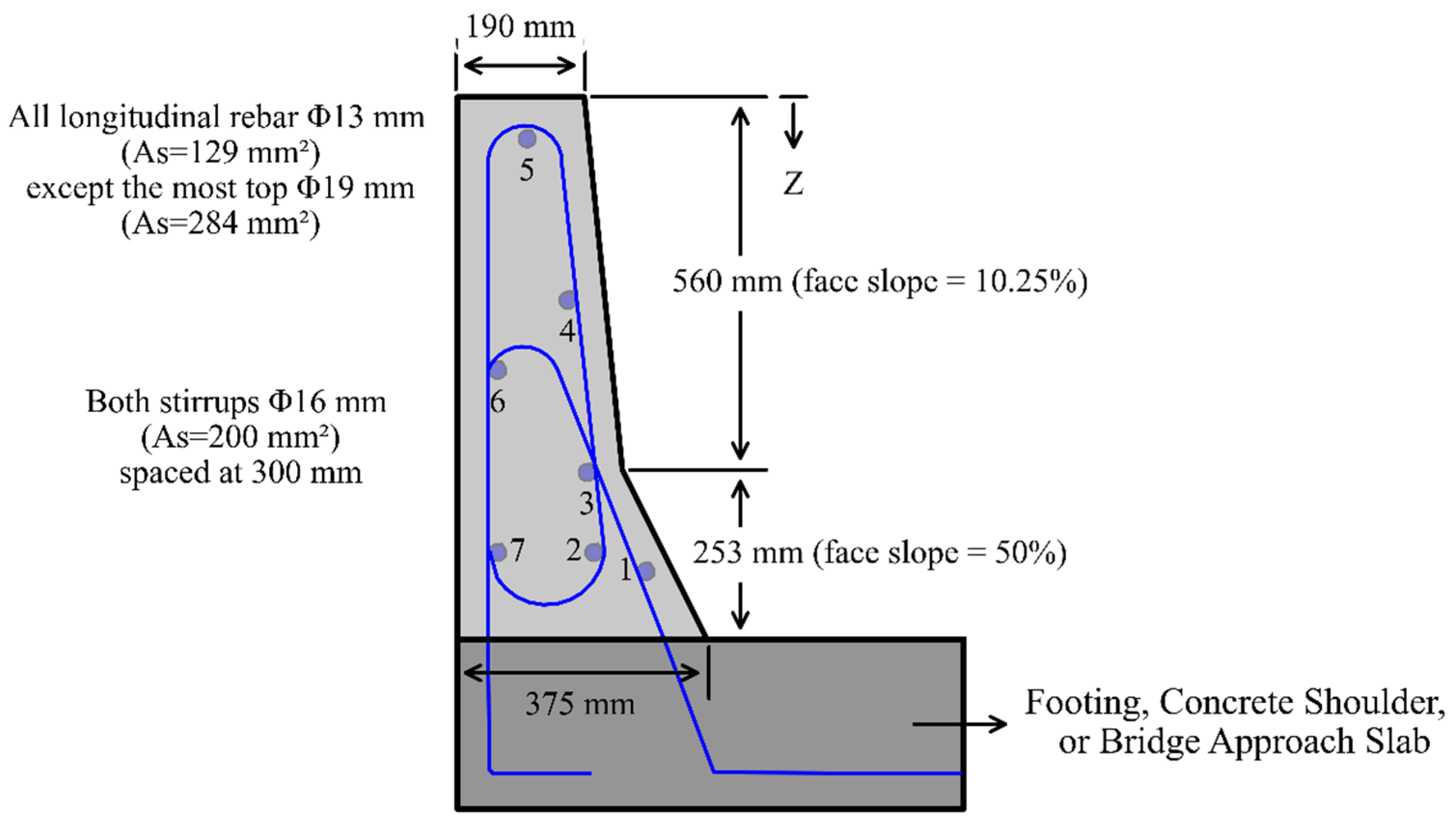

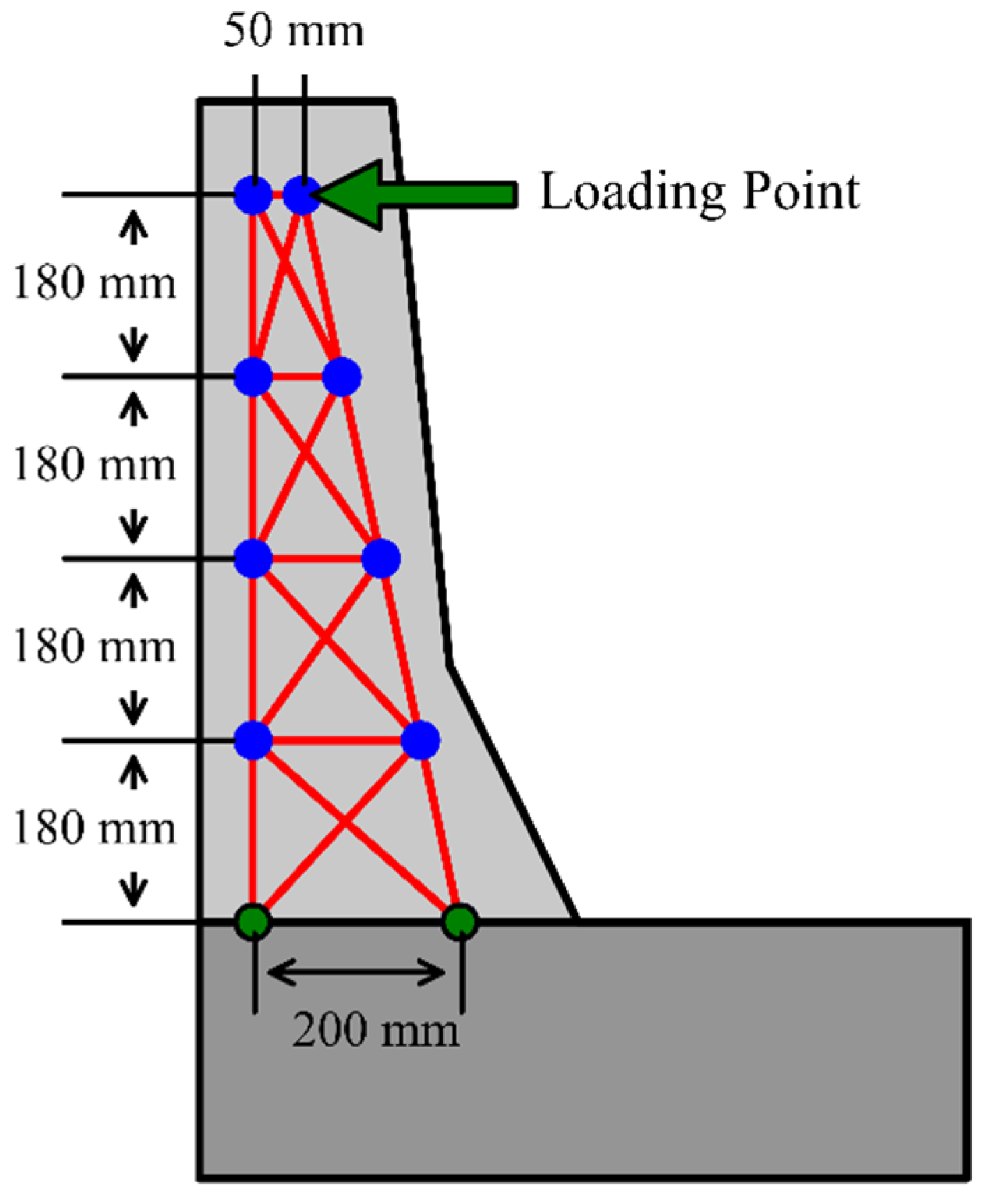
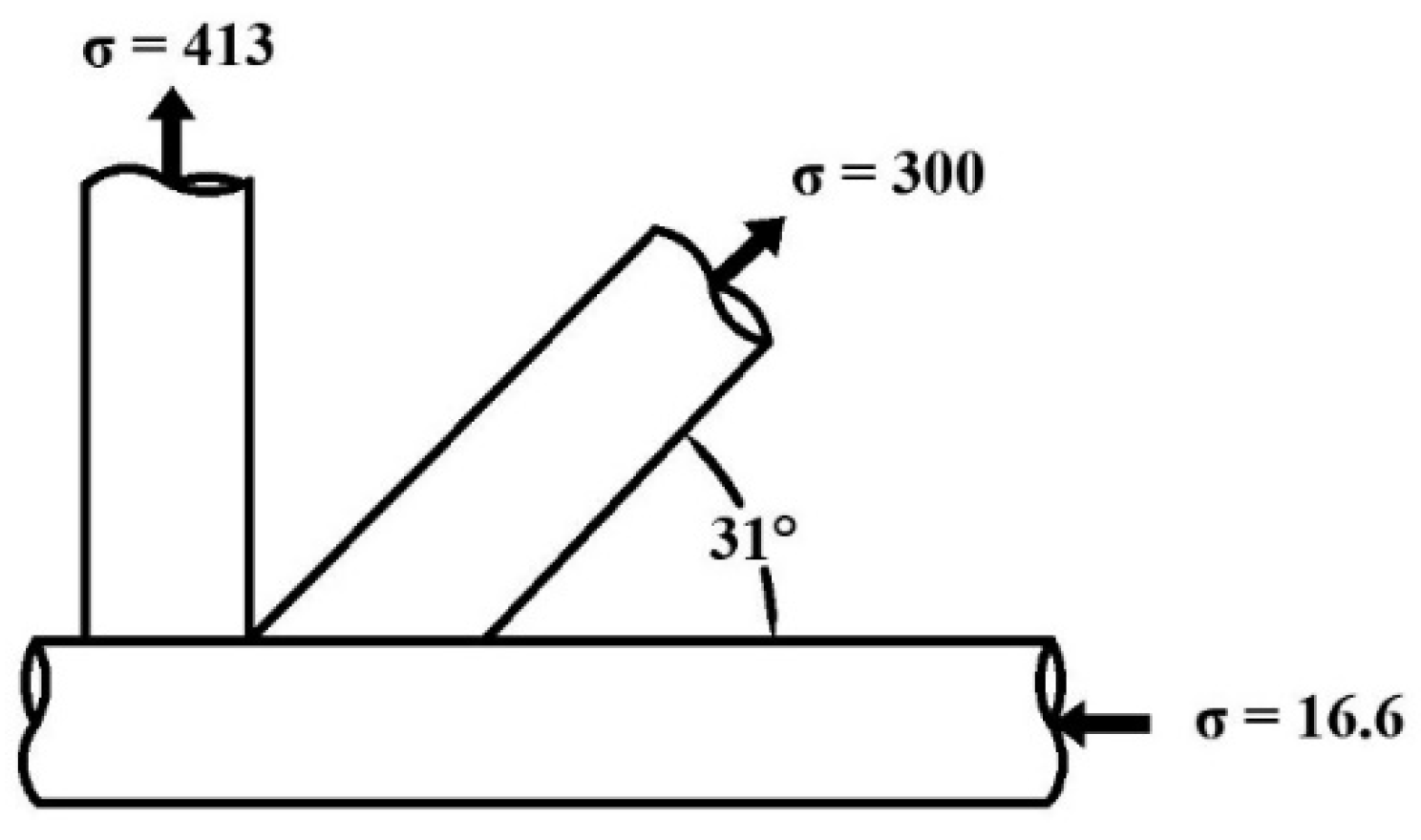
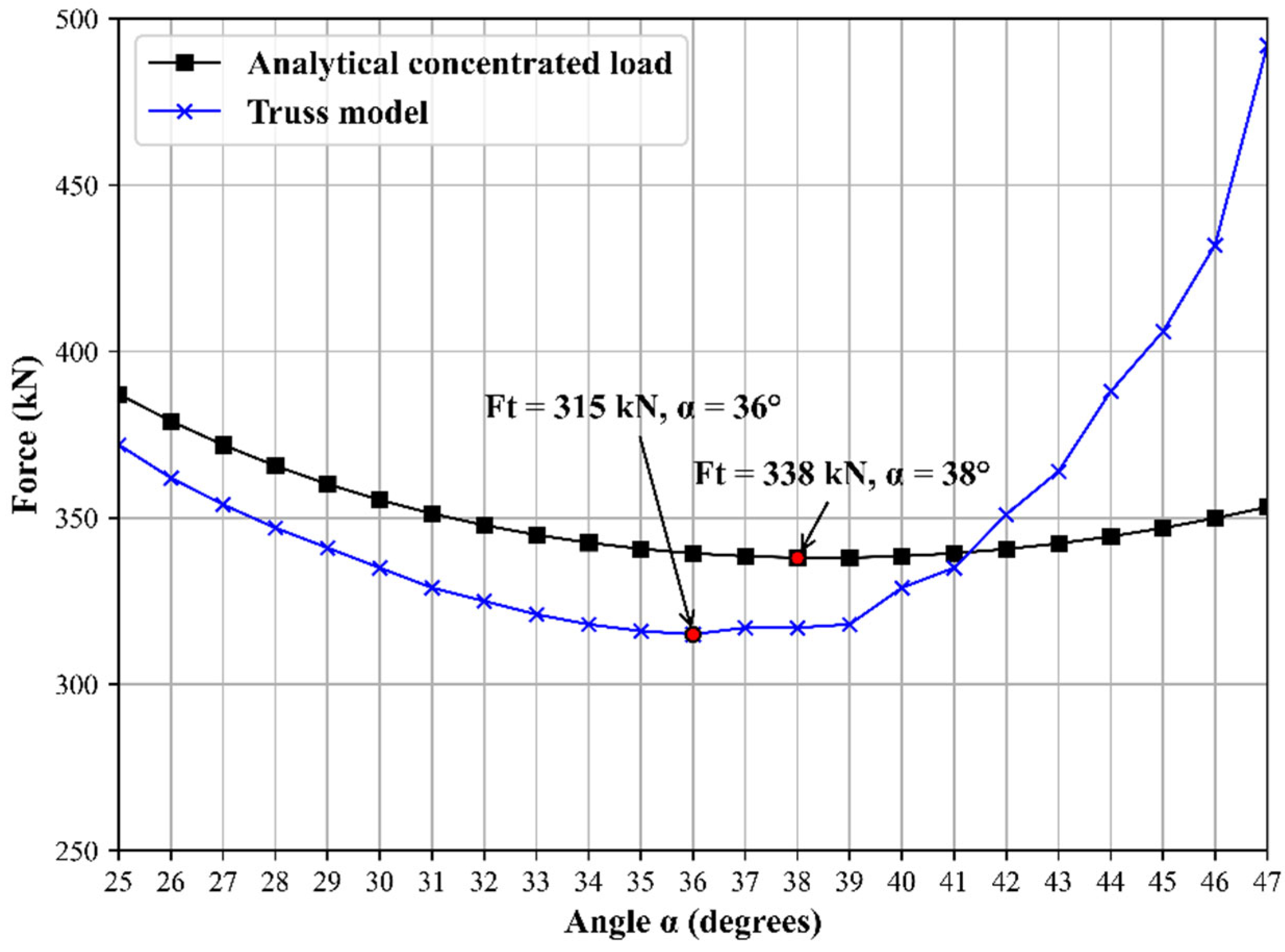
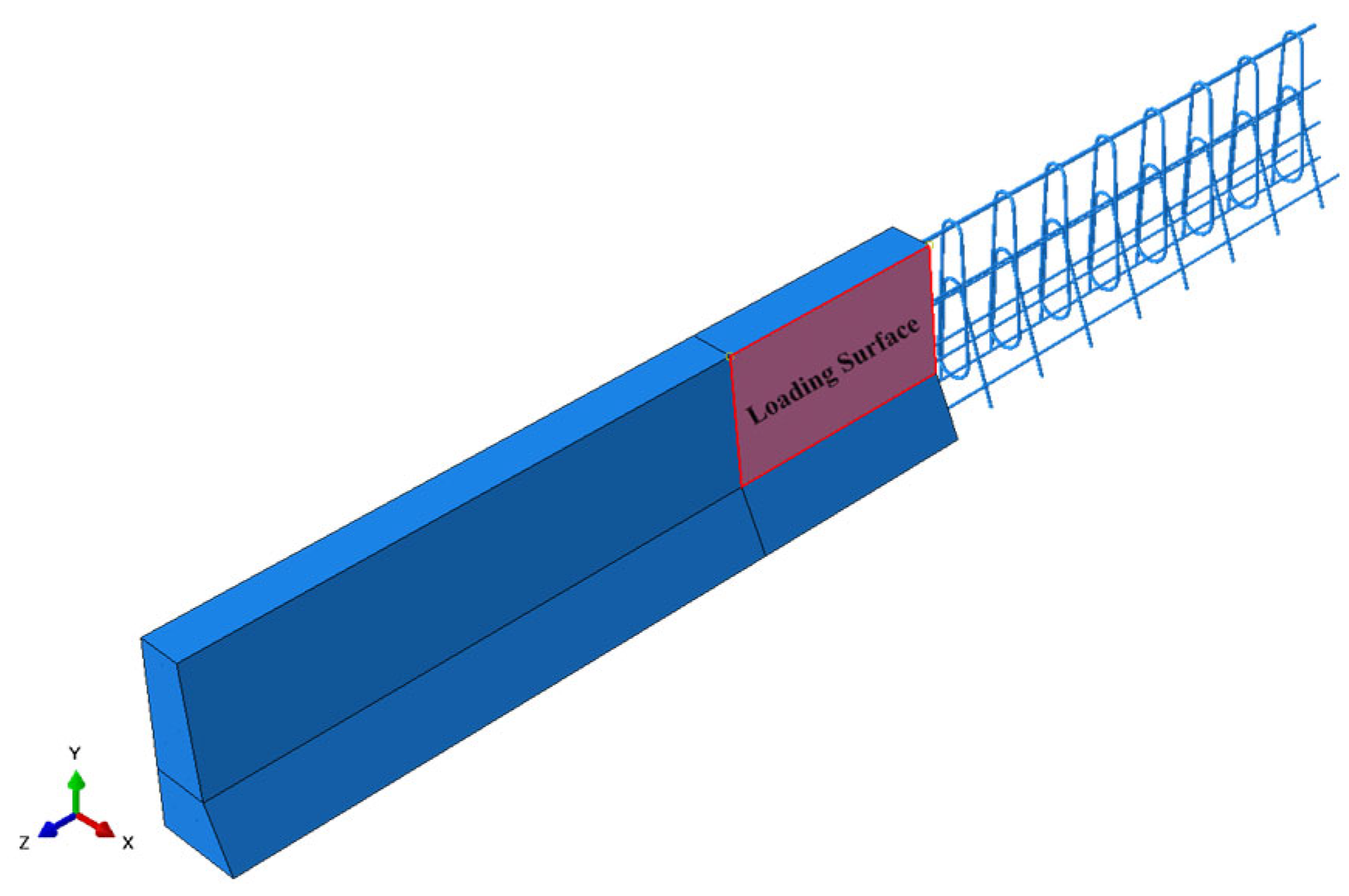

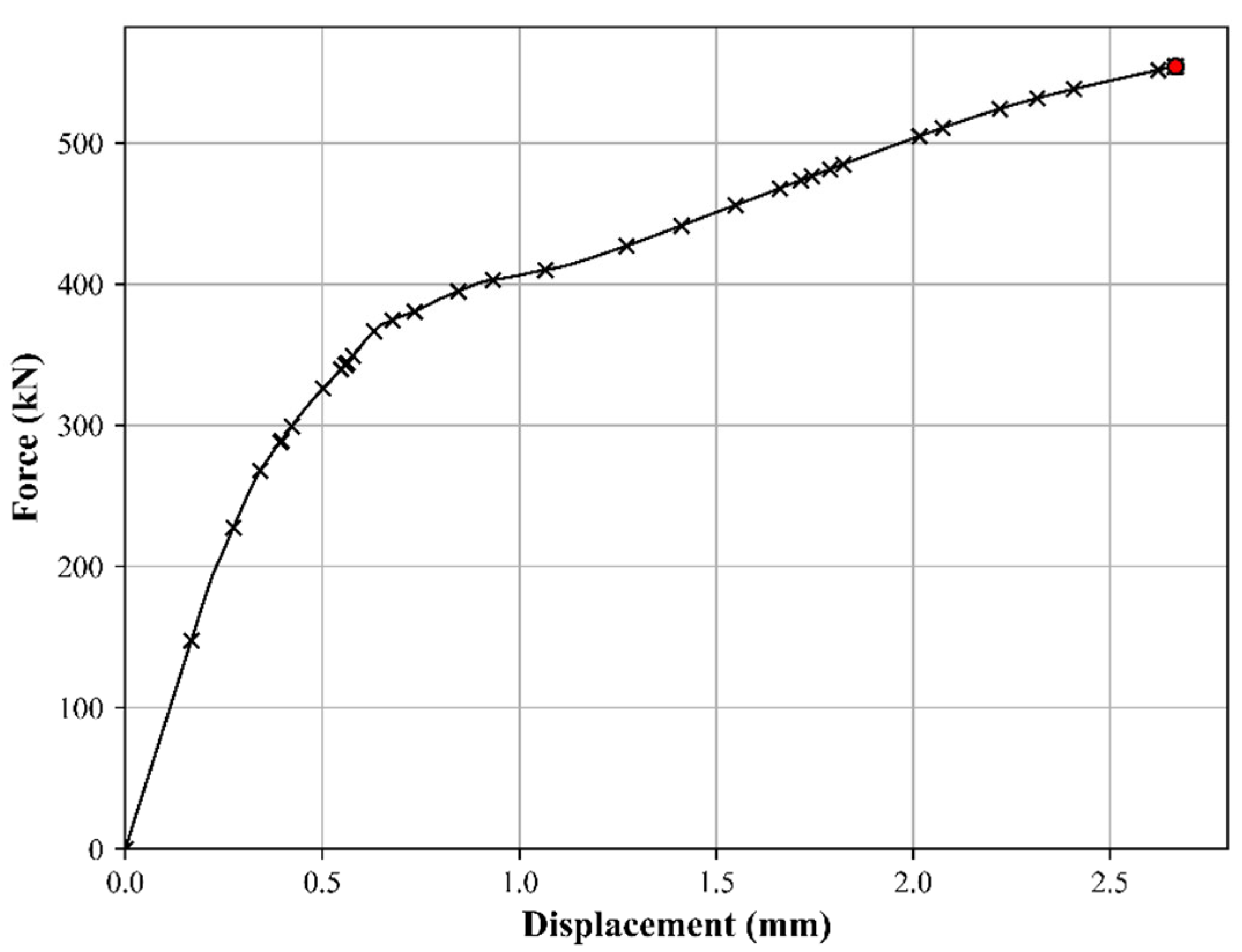

| Vehicle Type | Small Automobiles | Pickup Truck | Single-Unit Truck | Tractor-Trailer | Tractor-Tanker-Trailer |
|---|---|---|---|---|---|
| Mass (103 kg) | 1.1–1.5 | 2.27 | 10 | 36 | 36 |
| Angle of attack | 25° | 25° | 15° | 15° | 15° |
| Speed (km/h) | |||||
| TL-1 | 50 | 50 | na | na | na |
| TL-2 | 50 | 70 | na | na | na |
| TL-3 | 100 | 100 | na | na | na |
| TL-4 | 100 | 100 | 90 | na | na |
| TL-5 | 100 | 100 | na | 80 | na |
| TL-6 | 100 | 100 | na | na | 80 |
| Front Side | Back Side | |||||||
|---|---|---|---|---|---|---|---|---|
| Bar Id (as in Figure 9) | 1 | 2 | 3 | 4 | 5 | 5 | 6 | 7 |
| Area (mm2) | 129 | 129 | 129 | 129 | 284 | 284 | 129 | 129 |
| Cover (mm) | 45 | 122 | 76 | 76 | 107 | 92 | 60 | 60 |
| Mz (N.mm) | Mx 1,2 (N.mm/mm) | |||||||||||
|---|---|---|---|---|---|---|---|---|---|---|---|---|
| Front Side | Back Side | Front Side = Back Side | ||||||||||
| Section 1 (0 to 560) | Section 2 (560 to 813) | Section 1 (0 to 560) | Section 2 (560 to 813) | Section 1 (at 0) | Section 2 (at 560) | Section 3 (at 813) | ||||||
| Bar Id (as in Figure 9) | 3 | 4 | 5 | 1 | 2 | 3 | 5 | 6 | 7 | 1 stirrup | 2 stirrups | 1 stirrup |
| Area (mm2) | 65 | 129 | 284 | 129 | 129 | 65 | 284 | 129 | 129 | 1 × 200 | 2 × 200 | 1 × 200 |
| Area total (mm2) | 478 | 323 | 413 | 129 | 200 | 400 | 200 | |||||
| Cover (mm) | 76 | 76 | 107 | 45 | 122 | 76 | 92 | 60 | 60 | 54 | 54 | 54 |
| Avg. Cover (mm) | 94.5 | 82 | 82 | 60 | 54 | 54 | 54 | |||||
| d (mm) | 124.25 | 229.3 | 136.75 | 251.25 | 136 | 194 | 321 | |||||
| a (mm) | 6.14 | 1.02 | 4.82 | 0.37 | 11.74 | 23.5 | 11.74 | |||||
| Mz, Mx at sections | 24,474,394 | 6,659,469 | 18,407,839 | 1,952,182 | 35,830 | 100,367 | 86,767 | |||||
| Mz, Mx at sides | 31,133,863 | 20,360,020 | 76,024 | |||||||||
| Barrier Mz 3, Mx 4 | 25,746,942 | 76,024 | ||||||||||
Disclaimer/Publisher’s Note: The statements, opinions and data contained in all publications are solely those of the individual author(s) and contributor(s) and not of MDPI and/or the editor(s). MDPI and/or the editor(s) disclaim responsibility for any injury to people or property resulting from any ideas, methods, instructions or products referred to in the content. |
© 2025 by the authors. Licensee MDPI, Basel, Switzerland. This article is an open access article distributed under the terms and conditions of the Creative Commons Attribution (CC BY) license (https://creativecommons.org/licenses/by/4.0/).
Share and Cite
Salahat, F.H.; Rasheed, H.A.; Jones, C.A.; Klugh, I. Improved Yield Line Analysis and Innovative Methodology to Evaluate the Capacity of RC Barriers Subjected to Vehicular Collision Force. Infrastructures 2025, 10, 81. https://doi.org/10.3390/infrastructures10040081
Salahat FH, Rasheed HA, Jones CA, Klugh I. Improved Yield Line Analysis and Innovative Methodology to Evaluate the Capacity of RC Barriers Subjected to Vehicular Collision Force. Infrastructures. 2025; 10(4):81. https://doi.org/10.3390/infrastructures10040081
Chicago/Turabian StyleSalahat, Fahed H., Hayder A. Rasheed, Christopher A. Jones, and Isaac Klugh. 2025. "Improved Yield Line Analysis and Innovative Methodology to Evaluate the Capacity of RC Barriers Subjected to Vehicular Collision Force" Infrastructures 10, no. 4: 81. https://doi.org/10.3390/infrastructures10040081
APA StyleSalahat, F. H., Rasheed, H. A., Jones, C. A., & Klugh, I. (2025). Improved Yield Line Analysis and Innovative Methodology to Evaluate the Capacity of RC Barriers Subjected to Vehicular Collision Force. Infrastructures, 10(4), 81. https://doi.org/10.3390/infrastructures10040081









